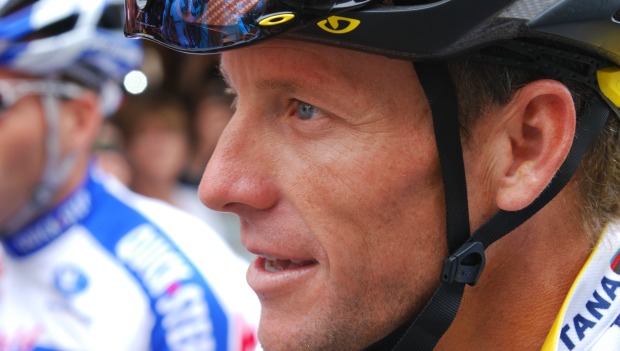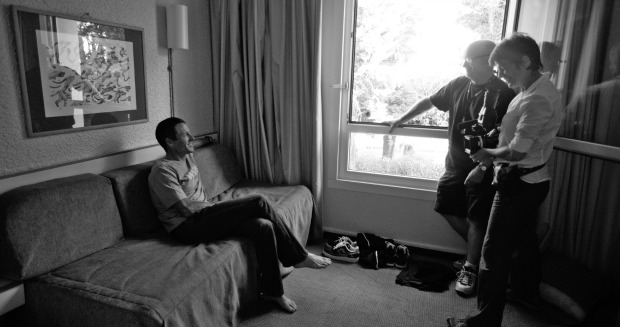The Armstrong Lie
A miraculous story is easier to believe because you so very much want it to be true.
Plot summary
Alex Gibney began recording cycling superstar Lance Armstrong back in 2009, until filming was unexpectedly halted following the much publicised doping scandal. Gibney’s documentary took an unexpectedly dark and complex turn when he resumed his study of the athlete in 2013, following Armstrong’s public confessions on The Oprah Show.

When Alex Gibney started filming Lance Armstrong in 2009, it was seen by both the cyclist’s most ardent supporters and fiercest critics as a fluff piece. Little more than a structured documentation of Armstrong’s comeback after four years away. An extra bit of positive publicity around cycling’s Superman. He was a self-proclaimed miracle. A man who had suffered the ordeal of testicular cancer and was given less than a fifty per cent chance of survival. A man who – not only recovered – but became a better cyclist than he had ever been, fought his way to the top, smashed records, won the biggest test of sporting endurance an incredible seven times over and became a role model to millions of cancer patients around the world. It was an almost unbelievable story. And one day it turned out to be just that. After years of defending himself against accusations of cheating with the most vehement denials, it all came out. Suddenly, Gibney wasn’t making a fluff piece anymore.
Along with the patients who found him an inspiration, the sponsors, cycling fans and the tens of millions of people who bought yellow LiveStrong wristbands, Gibney also felt wronged. He’d been travelling with a man in 2009 who had lied straight to his face every day and he wanted an explanation. When he heard that Lance was going to come clean and admit to doping, he contacted him and, after the Oprah interview, he agreed to speak to Gibney. In The Armstrong Lie, the original 2009 footage is framed for the first time in a different light as Gibney combines it with the admission of guilt and subsequent surrounding events.

A miraculous story is easier to believe because you so very much want it to be true.
It’s easy to believe Lance was racing the comeback race in 2009 clean of drugs because of the access Gibney was given. In the 2009 footage, it’s clear the filmmaker has bought into Lance’s story and it’s easy to see how. Some of the media had even turned; “Le mensonge Armstrong” – the L’equipe headline from which this documentary is named had now become “Chapeau, Le Texan” or “Our hats are off to you, Tex.” At this point he’s a hero adored by his fans; in one scene he literally signs a baby. Who then cries. Perhaps the baby knew more than any of us.
Even in hindsight, it’s hard not to be swung by Armstrong’s confident and convincing response to accusations despite knowing that he’ll go on to be stripped of his seven yellow jerseys. A miraculous story is easier to believe because you so very much want it to be true.
In the film, Armstrong calls this comeback his biggest mistake and it’s astonishing how he didn’t get caught prior to that. All the best cyclists around him had been found guilty (the film describes this as the cycling equivalent of everyone on either side of an NBA All-Star Game being banned) except for Armstrong. The film presents accusations of corruption and cover-ups at the highest level. Armstrong took injections of EPO to enhance his performance until the doping authorities created a test to discover it. Then he did mid-race blood transfusions which are almost impossible to detect; notably once on a team bus surrounded by journalists. These cyclists were going to extreme lengths to win. And it raised interesting questions; is it cheating if every one else in the race is doing the same thing? Of course, the answer is yes, but it’s clear the pressure some of these cyclists were under.
The other focus was that of Armstrong the role model. This was a man who set-up a hugely successful foundation and made millions for cancer patients. He regularly visited cancer wards and gave children and adult survivors hope. He was the miracle man after all. He gave people the belief that you can make it out the other side. So, isn’t it ok, then, to give people that hope, that belief, even if the whole story isn’t quite what it seemed? Again, no not really. It’s not fair. It’s set on a premise of deception. But it’s, of course, another reason the lie lasted as long as it did.
The winner of the Best Documentary at the London Film Festival last year, Gibney has put together an absorbing film, speaking to the closest people in Armstrong’s career; teammates, accusers, the infamous banned physician Dr. Michele Ferrari and, of course, the miracle man himself and result is quite remarkable.
You’re shown a contrasting Armstrong. In one scene, it’s 2009 and he’s publicly berating a journalist for a distasteful derogatory comment and responding to claims of doping with “we have the oldest secret in the book, hard work” and in another, it’s 2013 and he’s apologising but alongside a range of justifications. And it’s astonishing because he’s still annoyed by the people who were right all along. “I don’t think they’ll ever shut their mouths” says Armstrong the persecuted. He’s not sorry for what he’s done. He’s sorry he got caught.











COMMENTS